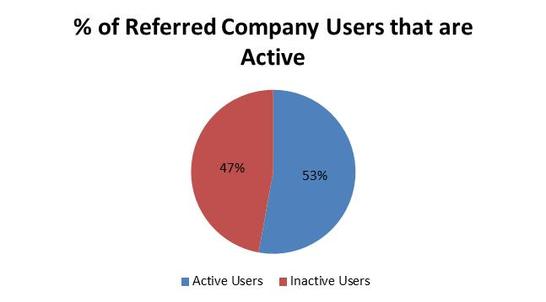|
One of the keys to Yammer’s success was their focus on metrics, and tracking customer invites was one of the most important metrics. Yammer’s success relied on two types of customer invite virality: one, intracompany virality – when employees invite their colleagues to join the company network; and two, intercompany virality – when employees invite outside companies to sign up a new company network. Measuring the intracompany virality is pretty straight forward, but calculating the effectiveness of intercompany virality is quite a bit more complicated and will thus be the subject of this post. Why is it more complicated? Because you first have to measure how many intercompany invites spawn new networks and then you have to calculate how many new users join the new company networks. In the attached spreadsheet, you will find anonymized user and company data for a mobile social networking company. Using the domain names of corporate email addresses is an easy way to determine if an invite is intracompany or intercompany. In my analysis, for 1,000 users which were created via intercompany invite, roughly 30% of those users spawned new active company networks (they invited colleagues to join their new company network). Taking the analysis to the second step, each active company went on to invite 10 additional users (on average). Roughly half of these new intracompany invited users became active and engaged users. So what can we make of this analysis? In aggregate, of the 1,000 intercompany invites, 293 created new company networks which ultimately spawned 1,633 users. From here, you can calculate the marketing costs of the 1,000 intercompany referrals and accurately compare that cost to the customer lifetime value of the 1,633 active new users. If the CLV is higher than CAC, you can add more marketing fuel to the fire. So how do you accurately calculate CLV? Well…I’ll save that for another day. :)
Comments are closed.
|
Sign Up to Receive Posts via Email
All
|
||||||



